McLeod Ganj was established as one of the two civilian settlements by the British when Dharamshala, the administrative capital of the Kangra district became overcrowded with troops and officers. Named after Sir Donald Friell McLeod, a Lieutenant Governor of British Punjab, probably the only reason why the place retains his name could be that he was a noted philanthropist and one of the founders of the present day Punjab University. The other settlement was Forsyth Ganj where the church of St John in the Wilderness stands mouldy defying time and cataclysms. Built in 1852, it miraculously survived the Kangra earthquake of 1905 which killed 20,000 people and razed most of the buildings in the area. One of the oldest churches in North India, it is neither protected nor maintained. Roaming around the lush deodar-quiet of its somewhat eerie surroundings, I stumbled upon two European backpackers who had plonked themselves in an unlikely land of the Nod – in the cemetery. Nothing aroused them, not even the milling crowd for the Sunday service. They were too gone in stoned slumber. Like most hill destinations in India, McLeod Ganj, also called Little Lhasa for its large Tibetan population, is gasping for space. In 1959, after a suppressed uprising against China, the 14th Dalai Lama fled to India where he was offered political asylum in Dharamshala. Ever since to this day, Tibetans fleeing from a tormented land and following their exemplar, find familiarity and shelter here. The entire town and its chief commerce congregate around an uneven square of hardly 50 metres. The plangent traffic to the nearby Bhagsu Nag – a Hindu hotspot – takes on cacophonic dimensions as the day warms up. A stilted parking area on a bluff looked tantalisingly friable to incite confidence and vehicles were parked helter skelter. The wildly gesticulating cop finally surrenders to the pell-mell and retires to the beckoning awning of a roadside tea stall. As if taking cue, it starts to drizzle. Pritter pratter… it goes on the glass windows through which I am watching the junction jamboree. The monks from the nearby Namgyal Monastery begin to trot along with their ballooning purple robes that have become purpler as the drizzle becomes a full blown rain. One frail European lady in ill fitting khakhi trousers and white shirt is walking around, impervious to the traffic or the rain, feeding the cows that stood shuddering off the flies from their flanks. While the adult bovines look at her with benign gratitude, the calves pounce on the delectable breakfast of discarded fruits and vegetables collected from the market. I decide to jog along with a monk who was billowing down the narrow lane towards his sanctum sanctorum a short walk away. My brief ‘Good morning’ was greeted with a sing-song ‘Hellooo’, a tight grin, pleasant in its innocence and twinkling eyes – just like the Dalai Lama in the pictures.
“You guys meditate a lot, right?” I could afford to be curt as Buddhists never bite.
“Yes, yes.” I suspected even Russell Peters wouldn’t have given anybody so much mirth from the way he laughed as he answered.
“Doesn’t all these traffic come in the way?” I gave him my best ‘come-on-you-can-trust-me-with-your-deepest-darkest-secret’ look.
“No, no.” His shaven head almost touched the pavement as he doubled up laughing.
“But surely…” I needed my sexy byte.
“See my friend,” suddenly it was the tight grin and twinkling eyes, “all these sounds help us focus harder, makes for better meditation.”
“But of course.” We had reached the entry to Tsuglag Khang, the Dalai Lama’s temple complex which also housed the Namgyal Monastery. A trance overtook my merry monk and he walked, rather glided away like I never happened. Even the heavy cretonne draped around him, waltzing a moment before lay down in gentle waves. The chants echoing from the deep recesses of the temple reverberated into a goose bumpy calm, luring me inside. The main shrine has a gilded Buddha and there are two smaller ones of Chenrezig (or Avalokiteshwara – the bodhisattva of compassion) and Guru Rinpoche (Padmasambhava – the great Buddhist saint). Offerings from Sri Lankan rupees to Tiger glucose biscuits straggled up in a pile in front of each of these deities. Photography was strictly prohibited and the diktat enforced by a monk whose advanced age and squirming eyes made his bald head look a little menacing. I wouldn’t have been surprised if he could decapitate me with a single swish of his innocuous paper fan; I put my camera away. Prayer or mani drums rotated silently sending out the prayers Om Mani Padme Hum to the world. Footwear, understandably, were not allowed inside the hallowed premises. But what was baffling was a sign which read ‘Make sure that your shoes are not stolen by someone’. The Dalai Lama, who heads the Tibetan Government in exile, resides inside the compound. His itinerary posted outside the locked gates shows a busy figure travelling all over the world preaching Buddhist tenets, sharing his belief on Shambala and teaching the Kalachakra tantra. There were photographs from all over the world – of his followers showing obeisance with revered baisemains. It was really good enough to work up a fervour making you want to meet him. But it would be another two months before he would be back to his office-in-exile. The Tibet Museum inside the complex houses hope. Through faded photographs it documents with a vivid objectiveness the Chinese atrocities during the ‘Cultural Revolution’. There is a film show which screens the flight of the Tibetans from their homeland to a new life here. In the film, as in real life, they all flock to the Dalai Lama who jokes with them. From his tightly pursed laughter the refugees seem to see a glimmer of hope to begin anew: though they are bowing, you can see a newfound determination. A nearby tarn called Dal had dried up – probably not to steal the thunder from its namesake in Kashmir – and I was free for the day. The Bhagsu Nag trek I would do tomorrow. I sauntered about checking out the gun metal trinkets and shell knick knacks on display along the numerous stalls that lined the road to the monastery.
“Are you a photographer?” It was a tall Indian youngster who was standing next to a Bullet bike.
“Not really, but I take photographs. Are you one?” I asked nodding at his swanky, sleek Canon.
He was a professional photographer accompanying a writer covering Dharamshala for a travel magazine. The writer had called in sick – she ate too many momos – steamed chicken dumplings – and an overdose of the accompanying chilly paste wrecked her. He asked me to his room where, he said, we could ‘share photographs, experiences and…everything else’.
Our eyes locked for a long moment after the last bit.
Wanderink recommends: Like every mountain destination, McLeod Ganj too is grappling with a serious lack of space – both in terms of decent accommodation and vehicle parking. The steep terrain does not make the option of demolishing existing hotels, residences and constructing newer, bigger ones a viable option. But we can learn some valuable lessons from this common malady afflicting almost every other popular hill station – be it Shimla, Mussoorie, Manali, et al – and apply them to upcoming ones like Chakrata, Reckong Peo, etc. One legacy the British left behind are the fabulous Gothic churches which are in a desolate state, in dire need of restoration. This includes the church of St John in the Wilderness here. Will the ASI kindly take note?


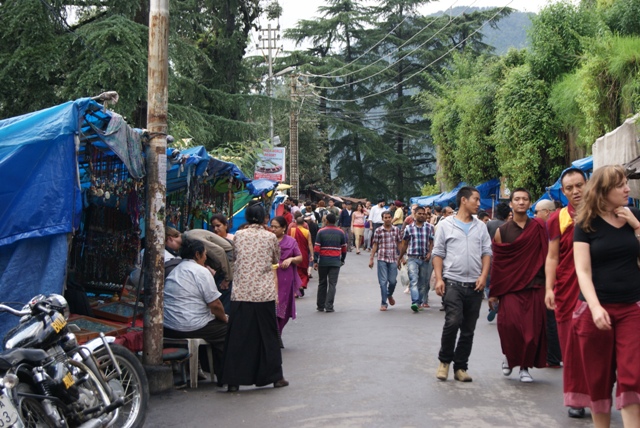
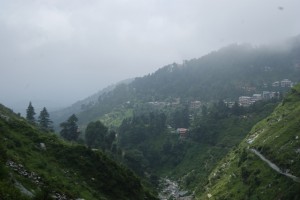
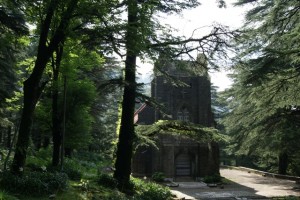
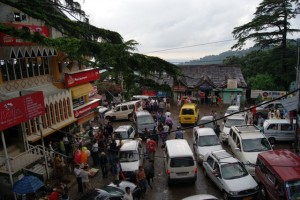
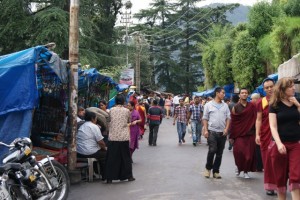
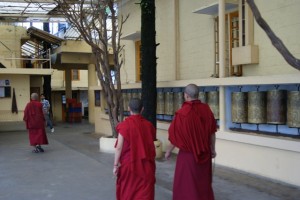
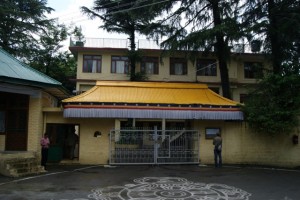
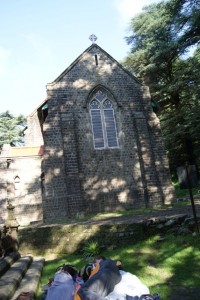









Lovely photos. I also loved this place, it was so beautiful and peaceful 🙂
http://www.chaiacupoflife.com/dharamshala-and-mcleodganj
Thanks, Chai 🙂 I see you have done some marvy stuff from the lil Lhasa too..